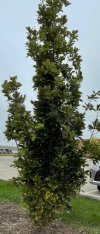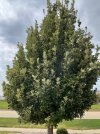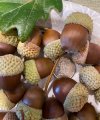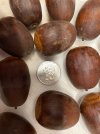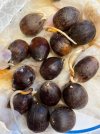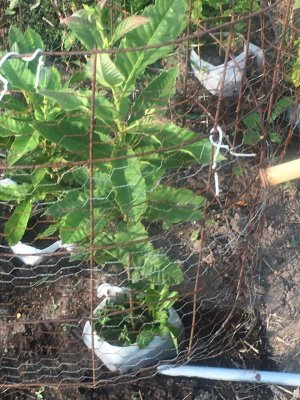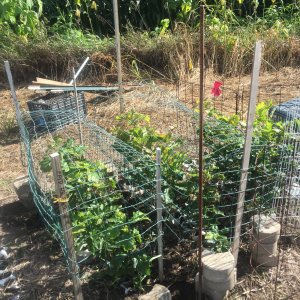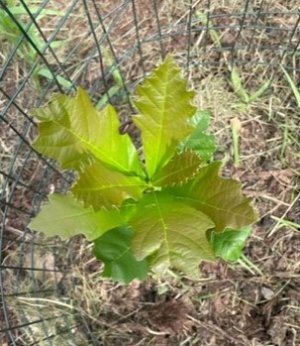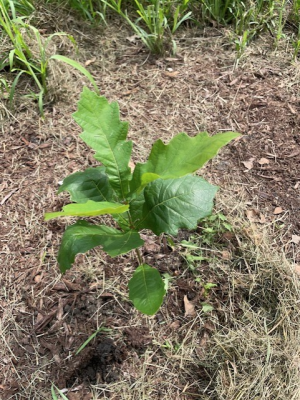Mr. Fishman ... you are astute in your observations. Actually, the acorns on all 3 plates have SWO parentage. Acorns on the plates represent SWO acorns, Regal Prince acorns and Kindred Spirit acorns. SWOs are on the plate on the right and KS acorns are on the plate on the left in post #194. The acorns on the plates in post 196 are from a Regal Prince white oak tree. Both the KS hybrid white oak tree and RP hybrid white oak tree is a cross between a SWO and English Oak (fastigiate / columnar shape). The acorns of all 3 varieties look very similar (some might say identical). Even though you saw acorns and leaves (2 of 3 identifying characteristics), the trees shape - along with the acorn/leaf information - would make identification most accurate. The first photo shows the KS tree while the second phot show the RP tree. What do we learn from this exercise; it's often difficult to id an oak tree accurately from an acorn or leaf alone since there is frequently lots of variation. Fall is the best time to see all 3 characteristics (leaf,acorn, tree size-structure).
I believe this exercise reveals a potentially important aspect of SWO trees (including and especially hybrids). When I harvested the SWO acorns off the tree in late September, I would guess 30-40% of the tree's acorns had dropped and there were virtually no green acorns on the tree. It's one of my better SWO trees for dropping into Oct. Acorns picked off the KS and RP trees - as recently as today show only 15-20% of the acorns had fallen and many on the tree were still green. It is interesting that these hybrids might be dropping later than SWOs, or the parent English Oak (the EOs in my area drop in early Sept.)
I believe this exercise reveals a potentially important aspect of SWO trees (including and especially hybrids). When I harvested the SWO acorns off the tree in late September, I would guess 30-40% of the tree's acorns had dropped and there were virtually no green acorns on the tree. It's one of my better SWO trees for dropping into Oct. Acorns picked off the KS and RP trees - as recently as today show only 15-20% of the acorns had fallen and many on the tree were still green. It is interesting that these hybrids might be dropping later than SWOs, or the parent English Oak (the EOs in my area drop in early Sept.)

